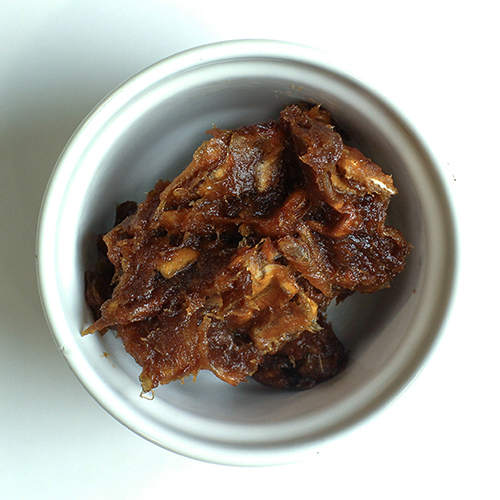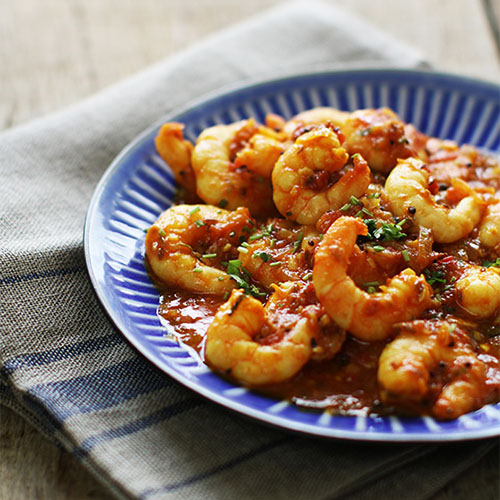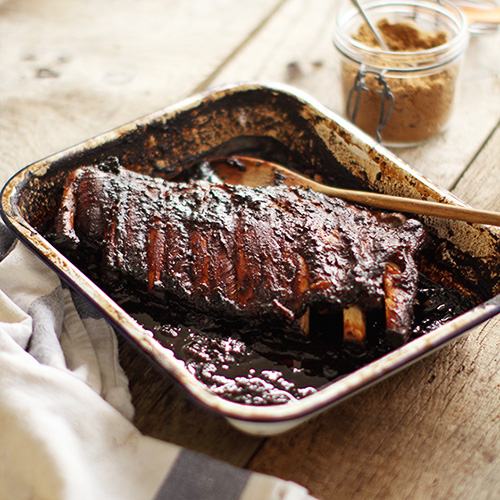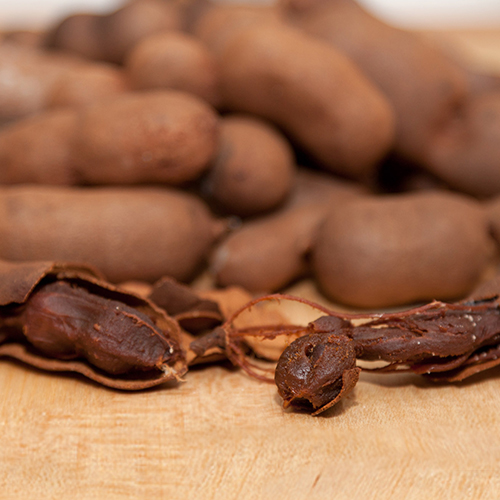It's used both as a spice and a souring agent, which just goes to show how flexible this little gem is.
The tamarind tree is a bushy thing that grows in tropical and sub-topical areas. Its fruit pods hang from the trees, are about 15cm long and have a hard brown shell. But it's the fruit inside that matters. It has a fleshy edible pulp that gives a sweet and sour taste to cooking which comes from the high levels of tartaric acid, sugar, B vitamins present in the pulp, and it's packed with calcium, too.
My mum would tell me stories of how, when she was a little girl growing up in India, she'd pull the pods off the trees on her way home from school. She'd chew it all the way home and end up with a sore mouth from the acid – a bit like we all used to get from eating a bag of sherbet lemons! – but it was worth it for that gorgeous sharp, sour tamarind flavour.
How to use tamarind
Tamarind can be bought in a variety of ways, my preference is to use either the dried or wet compressed blocks. These blocks are made from the tamarind fruit pulp which have had the majority of their outer pods, stones and fibrous material removed. First, you need to break off the amount you need, (roughly about 25g will give you about 130ml of paste), this can vary as tamarind can differ in strength quite a lot. This solid tamarind is then soaked in hot water and left to soften for a good 20 minutes. Once soft I use a fork to mash it further and to get the tangy tamarind paste. This is then put through a fine sieve to remove all the solid material so you are left with a tangy paste. 
You can also buy it in jars as a ready made paste that's much easier to use, but in my opinion not as good or as a concentrate which looks like black molasses. I'm not too keen on using the concentrate either as it makes the colour of your food really dark. Finally, you can also buy it as a dried powder.
Uses of Tamarind
Tamarind is used in many different types of cooking in many different areas of Indian, but the reason is always the same – to add a fruity acidity.
In many Latin American countries tamarind is rolled up with granulated sugar and spices to make little round sweets. In Egypt it's made into a sour drink and its used all the time in Thai cooking. And if you think you've never had it, you probably have as it's a key ingredient in Worcestershire and brown sauce!
Indian cooking
Tamarind is a common ingredient in Indian cooking. Locally known as 'imlee' it forms the basis on many chutneys (such as my Imlee Chutney) and in condiments eaten daily with street food across Mumbai. These give the sweet, sour, chilli balance that the Indian pallet loves. Another favourite is Sweet Date and Tamarind Chutney that is served with the famous Gol Guppa.
In South India it's used to flavour rice where it adds a subtle freshness that tastes like nothing else on the planet. In fact, it's so good, tamarind rice is the dish offered to pilgrims at Hindu temples in South India. All Indian fish marinades require a sour note and tamarind works wonderfully here. The classic Patran ni machi is a Parsi fish dish from the Gujarat region where the fish is smeared with a spice paste made from coconut, tamarind, mint, coriander then folded into a fresh banana leaf and steamed or grilled. Amazing!
I love using tamarind with prawns because it gives a fruity zing that's softer than lemon juice. Try my Tangy Tamarind Prawns but you have to soak up the tangy tomato masala with a fluffy Poori. 
Tamarind also works with some really robust flavours too, so the classic Lamb Madras is all about the tamarind kick, rather than just chilli.
I've tried to use tamarind in many different ways over the years and if you love ribs then you are going to love my Tamarind Ribs. They are hot, sticky, tangy, spicy and just faaaaabulous.
Other uses
Tamarind is used in traditional medicine in Africa to help fight a fever. The wood from the tree has a beautiful red colour, and as it's so dense it's used to make sturdy, hard-working and beautiful furniture and flooring.
The high level of acidity in tamarind concentrate also makes it a great product to polish metal with, especially brass and copper.
Oh, it also makes a great dinner party talking point so next time you use it, keep a little to one side and as everyone is admiring your food and cooking skills, get the tamarind block out and ask your guests if they know what it is. Better still, get them to taste it. Not only is it hilarious watching their Tangfastic face-pulling but you'll come across as a chef who knows their stuff!
Back to Blog

Comments